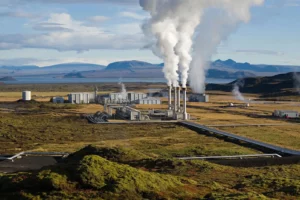Geothermal energy traditionally harnessed in volcanically active regions like Iceland, is on the brink of a transformative expansion.
Advances in enhanced geothermal systems (EGS) are extending their reach beyond these natural hotspots.
By employing techniques akin to fracking, EGS allows for the extraction of the earth’s heat in regions previously considered geologically inactive.
This process involves injecting water into deep underground rocks, producing steam that powers turbines to generate electricity.
This expansion significantly broadens the geographical scope and potential of geothermal energy.

The recent technological breakthroughs in EGS could massively elevate its role in the energy grid.
This method offers a reliable alternative to the intermittent nature of other renewables, such as solar and wind, potentially generating vast quantities of electricity.
The U.S. Department of Energy (DOE) is championing these innovations with substantial investments aimed at scaling and validating EGS technologies.
Furthermore, the potential of geothermal energy extends beyond electricity production.
States like West Virginia and Maryland are exploring geothermal applications for residential and commercial heating and cooling, taking advantage of shallower geothermal resources.

